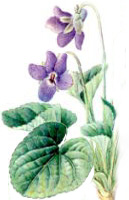When I started to grow vegetables indoors I was mostly alone. I had a predecessor in canadian Joy O I Spoczynska who wrote books about self sufficiency in a flat during the seventies and eighties. Apart from that there were little about ”normal” gardening - you could find a lot about hydroponics and similar that craves special gears, but little information on vegetables in ordinary pots. There was litterature on growing herbs indoors, and when I made a small survey on the different gardening forums I frequent (Odla.nu and Alternativ.nu - both swedish) that was what most indoor gardeners grew. But a few had tried other things, and that made me press on with my odd experiment. When I write this indoor vegetable gardening is beginning to catch on in Sweden. At the Nordic Gardens fair ”the Indoor Garden” was a best seller - a steel box with a plant light and water ciculating to make it possible to grow herbs on the window sill. Yes, it's herbs again and it is a slow process, but it's still a start.
In the beginning I had a lot of problems. The worsts were my own lazyness and procrastination and lack of knowledge. I handled the lazyness by starting a blog (Indoor Gardener / Parkettodlaren) to document my experiment. If I hade promised to the world to show what happened I would feel bound to keep up the work, was my theory. It worked for several years. The lack of knowledge was worse. I hadn't been gardening for several years, and didn't know anything about what critters and illnesses could affect vegetables. If something happened I didn't notice, and if I did notice I didn't know what to do.
It was more fun to work out the perfect crops. I had to do it through trial and error, which made a perfect excuse to buy too many seeds of different varieties. Mostly I chose the exact wrong vegetable. For exemple I wanted root vegetables, since I don't like sallad. But to grow one carrot per pot was not a effective way to use the scarce space available. For a while I grew turnips, but gave them too much fertilizer. The leaves turned out thick and green, and the root became a chewy and stringy... string. I never started any potatoes, since I by then had worked out that I couldn't provide any working grow light for it. On the other hand the turnip leaves turned out to be tasty in gravy and tiny carrot leaves are a palatable replacement for sallad.
Vegetables that grew too big was an experince of its own. Since we are permanently low on money I tried to save as much as I could. Part of that was to plant some seeds from a tomato I bought for our sallads. The seedling grew into two meter (or six foot) monsters who bombed their suroundings with cherry tomatoes. (They were placed on a window sill in a room where the ceiling was five meters (fifteen feet) above the floor, which meant the fruits could come from a height of more than three meters (nine feet). When I was done contemplating an indoor helmet I cut the plants down, and replaced them with tomatoes cultivated specially for small spaces; Tiny Tim.
The new tomato plant were provided with company - two seedlings of land kelp. The crop seemed promising when I read about it in the seed catalogue, high yielding and such. Only when the plants started to grow I learned that they could grow vines as long as fifty meters (150 feet). Luckily enough they didn't get that far, but they became big. I got lots of leaves from them, and they sent vines behind the sill, the wall papers and between the walls and the window case. The big harvest was a curse, since no one in the family liked the taste. Three years later I still have frosen land kelp leaves in the freezer.
My last problem was the recycling. I didn't have the heart to throw away perfectly good soil when I'd used it only once. And all those twigs and leaves I had to remove could certainly go into a compost. So I set up a vermicompost and started to heat sterilize the soil in our stove. It worked. I had a crude circular flow of soil and plants going, but it took up space and drained my energy which meant my interest for gardening regularly crashed.

Indoor Vegetable Gardening Handbook, beginning pt 1 by Malin Nilsson Norén is licensed under a Creative Commons Erkännande-Ickekommersiell-IngaBearbetningar 3.0 Unported License.
Next week will probably be an epic tale of our strife at our allotments, and the week after that you'll read the rest of the beginning; the advantages with growing vegetables indoors.





No comments:
Post a Comment